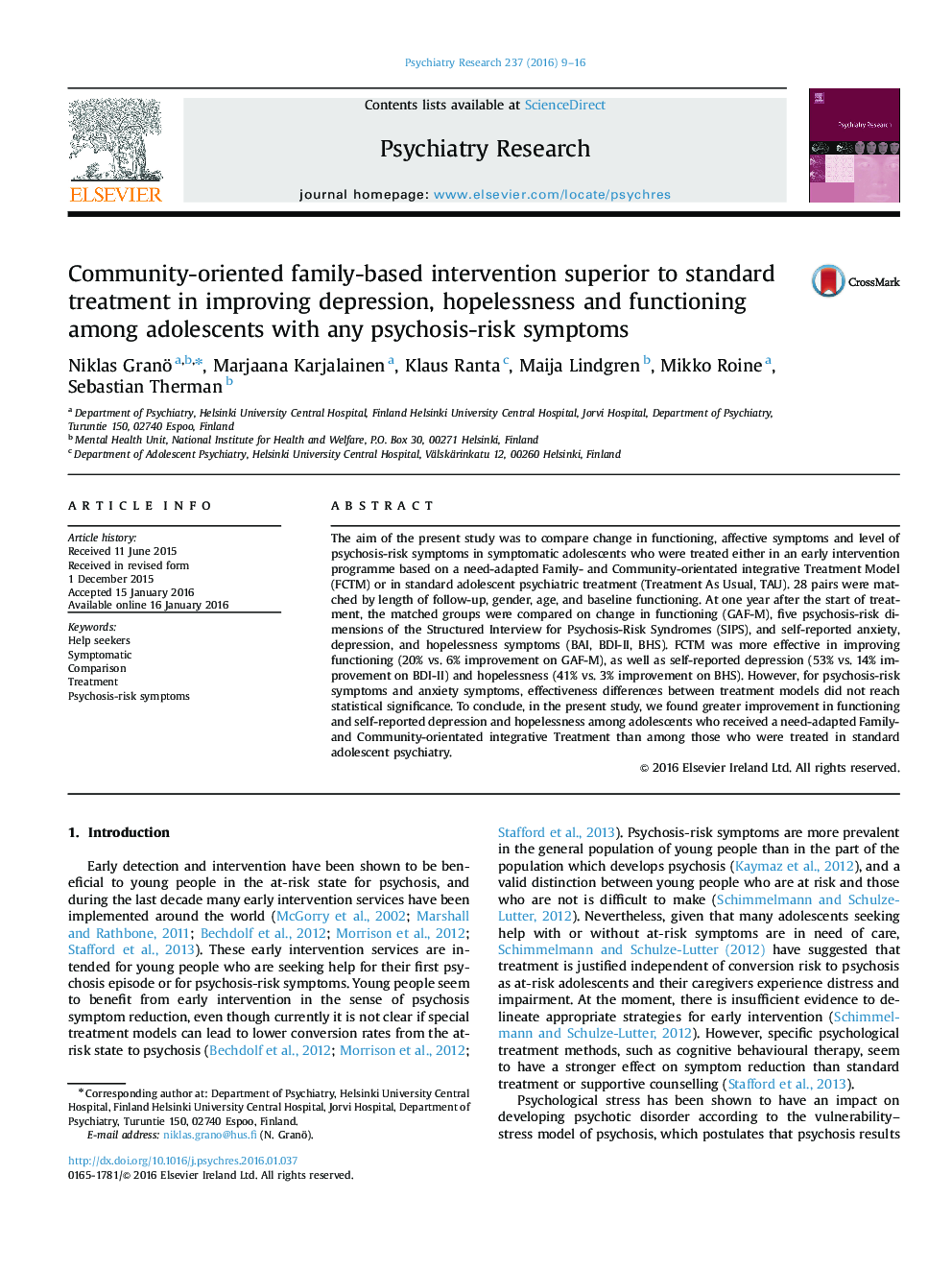| Article ID | Journal | Published Year | Pages | File Type |
|---|---|---|---|---|
| 333084 | Psychiatry Research | 2016 | 8 Pages |
•Adolescents with psychosis-risk symptoms suffer from general psychiatric symptoms and lower functioning.•Greater improvement was found in functioning, depression and hopelessness among adolescents who received integrative treatment than among those treated in standard adolescent psychiatry.•Results were achieved with a matched pair study design.
The aim of the present study was to compare change in functioning, affective symptoms and level of psychosis-risk symptoms in symptomatic adolescents who were treated either in an early intervention programme based on a need-adapted Family- and Community-orientated integrative Treatment Model (FCTM) or in standard adolescent psychiatric treatment (Treatment As Usual, TAU). 28 pairs were matched by length of follow-up, gender, age, and baseline functioning. At one year after the start of treatment, the matched groups were compared on change in functioning (GAF-M), five psychosis-risk dimensions of the Structured Interview for Psychosis-Risk Syndromes (SIPS), and self-reported anxiety, depression, and hopelessness symptoms (BAI, BDI-II, BHS). FCTM was more effective in improving functioning (20% vs. 6% improvement on GAF-M), as well as self-reported depression (53% vs. 14% improvement on BDI-II) and hopelessness (41% vs. 3% improvement on BHS). However, for psychosis-risk symptoms and anxiety symptoms, effectiveness differences between treatment models did not reach statistical significance. To conclude, in the present study, we found greater improvement in functioning and self-reported depression and hopelessness among adolescents who received a need-adapted Family- and Community-orientated integrative Treatment than among those who were treated in standard adolescent psychiatry.
